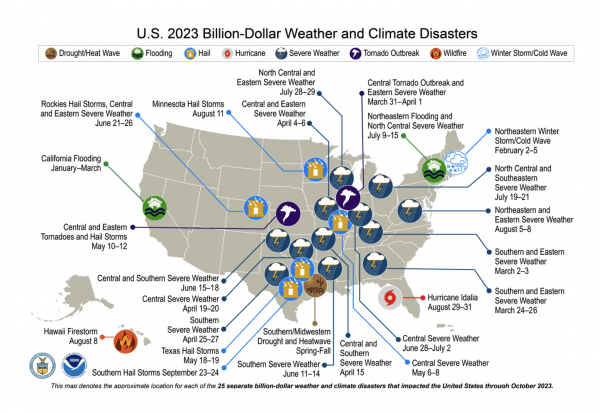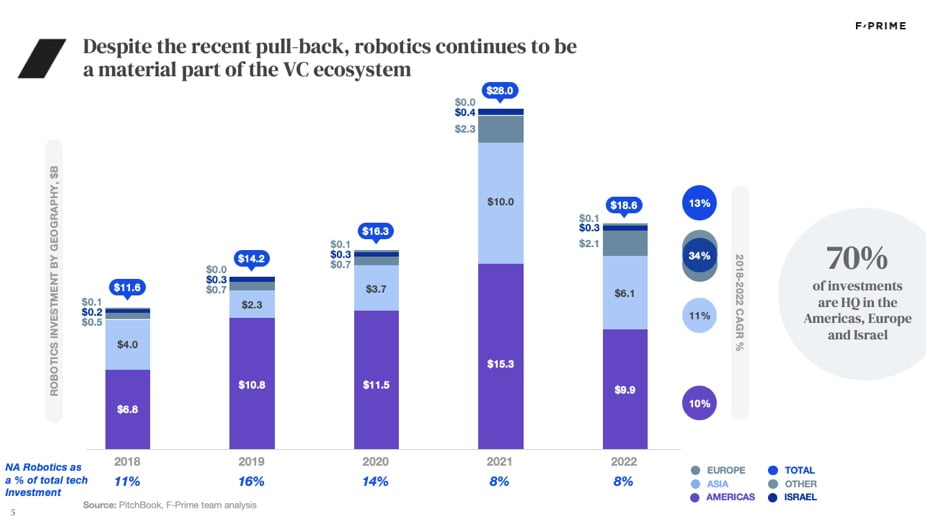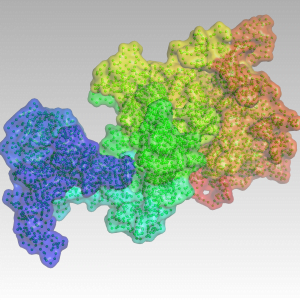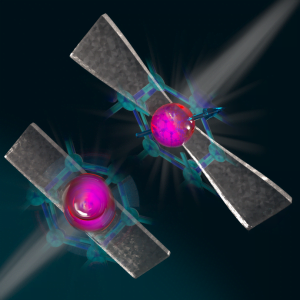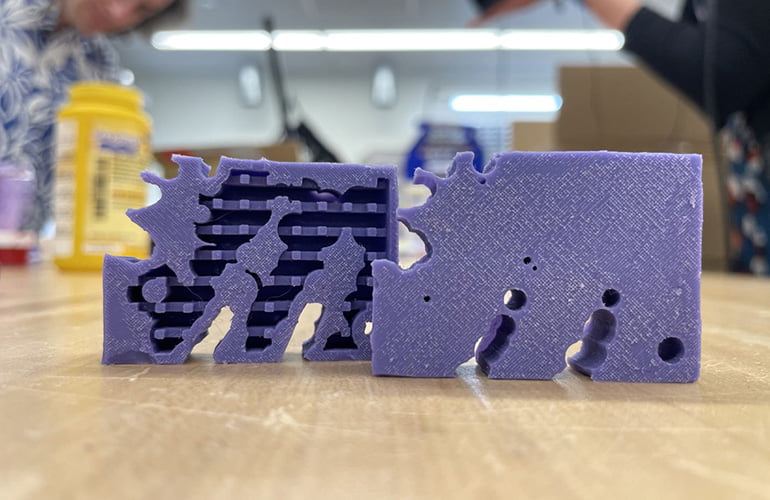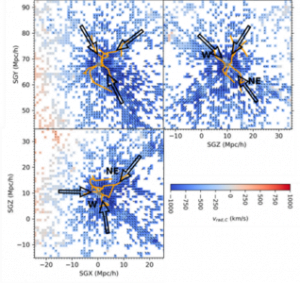
According to a recent report by NOAA, the US has confirmed a total of 23 separate billion-dollar weather and climate disasters in 2023 alone—the most events on record during a calendar year. Since 1980, the overall total cost of these billion-dollar weather disasters (including CPI adjustments to 2023) is $2.615 trillion. These numbers tell only part of the story […]

Despite the expectations of past science fiction writers, robots are still far from common in our everyday lives, notes the venture capitalist community. More than a fifth of the 21st century has now passed, and the worlds of The Jetsons and Lost in Space still feel like projections of a distant future. However, away from […]

For decades, scientists have probed how human DNA that would stretch more than 2 meters if unspooled from a cell is packed into chromosomes millions of times smaller. A single-cell 3D simulation of chromatin, the structures that make up the chromosome. The beads represent monomers, a segment of the genome, linked to form a polymer. […]

Businesses have embraced the use of artificial intelligence (AI), and most plan to rapidly expand its use going forward. However, one major inhibitor and source of problems is that many AI efforts require compute infrastructures that make use of enormous numbers of GPUs. The problem is that such infrastructures are difficult to design and build. […]

QuEra Computing, a leader in neutral-atom quantum computers, today announced a significant breakthrough published in the scientific journal Nature. In experiments led by Harvard University in close collaboration with QuEra Computing, MIT, and NIST/UMD, researchers successfully executed large-scale algorithms on an error-corrected quantum computer with 48 logical qubits and hundreds of entangling logical operations. The […]

2024 could be a year of building robotics momentum. Source: Adobe Stock 2023 was a year of great change within the robotics industry. We’ll see ripple effects from the latest booms in artificial intelligence and humanoid robots for years to come. Entering into 2024, a number of promising technologies and use cases are primed for […]

A future quantum network may become less of a stretch thanks to researchers at the University of Chicago, Argonne National Laboratory and Cambridge University. Breakthrough by UChicago, Argonne researchers could help pave way for quantum infrastructure. Illustration by Peter Allen. A team of researchers announced a breakthrough in quantum network engineering: By “stretching” thin films […]

A team led by Northwestern University researchers has developed an AI that can design unique robots from scratch. The team gave the AI a simple prompt, to design a robot that can walk across a flat surface, and used the AI’s design as blueprints to test its effectiveness. The post Northwestern researchers create robot-designing AI […]

High-performance computing (HPC) has played a major role in advancing scientific research for decades using extremely large datasets and sophisticated modeling that mimics the physical world. Rapidly advancing is the ability to complement the power and capabilities of HPC with artificial intelligence (AI) to accelerate innovations and deliver faster outcomes. The post Accelerating Science with […]

World-class computing technologies allow researchers to employ a powerful tool to complement experimental and observation facilities. A multi-institutional group of astrophysicists has turned to the power of the Leibniz Supercomputing Centre’s flagship system to simulate in unprecedented detail a large part of our celestial neighborhood, with a specific focus on the so-called Coma cluster. The […]
